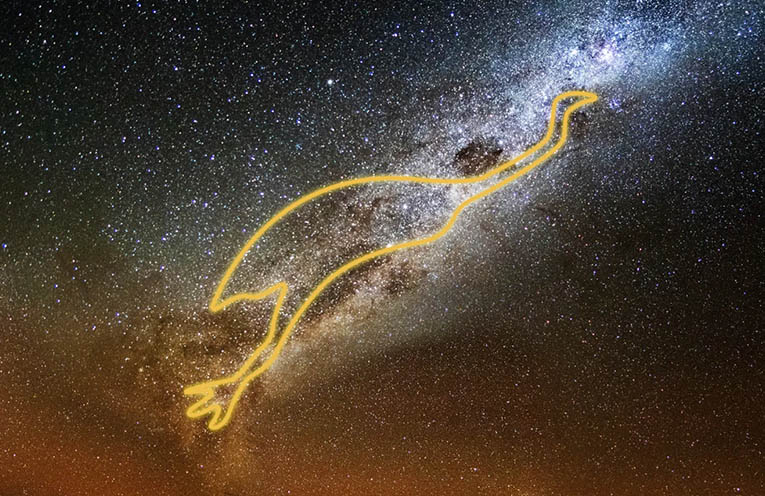LONG before observatories dotted the land and satellites blinked overhead, the First Peoples of Australia were reading the stars.
For over 65,000 years, Aboriginal and Torres Strait Islander communities have looked to the sky – not for abstraction, but for connection, direction, and survival.
Theirs is the oldest continuous astronomical tradition on Earth.
To these communities, the stars weren’t distant curiosities.
They were living knowledge systems, entwined with daily life.
Far more than campfire stories, these were calendars, compasses, governance tools, and moral codes – passed down through generations in song, ceremony, and story.
Each of the 250-plus language groups across the continent held its own celestial map.
Where Western astronomy joins stars into constellations like Orion or the Southern Cross, Indigenous stargazers focused on the spaces between the stars.
A striking example is the Emu in the Sky – not formed from stars, but from the dark dust lanes of the Milky Way.
When this shadowy emu appeared to be running across the sky, it signalling that emus were laying eggs – an important seasonal food cue.
The sky wasn’t just a spectacle; it was a guidebook.
The Yolŋu people of Arnhem Land share the story of Walu, the Sun-woman, who carries her torch across the sky each day – explaining daylight, warmth, and the passage of time.
The moon, too, is a character: Ngalindi, the Moon-man, was once strong and full, but after being attacked by his wives, his form waned.
He eventually died, only to rise again – a poetic teaching of the lunar cycle. No telescopes were needed.
Patience, observation, and story did the work.
This wisdom is preserved through songlines – oral maps linking land, stars, and lore.
A songline may describe a journey across the country, guiding a traveller past waterholes and ridges, while also tracing constellations overhead.
To walk a songline is to walk in tune with culture, cosmos, and country.
For Ghillar Michael Anderson, a Euahlayi elder and leading voice in Indigenous astronomy, the sky was a classroom.
“When I was a kid,” he recalls, “we would lie on our backs at night, and the old fellas would point to the sky and tell us who we are, where we came from, and what’s coming next.”
Today, modern science is starting to listen.
Physicists and astronomers are recognising that many Aboriginal sky stories align with observable phenomena – from eclipses and meteor strikes to tidal patterns.
The Wolfe Creek crater in Western Australia, for instance, is explained in Jaru and Walmajarri lore as the spot where the Rainbow Serpent crashed to Earth – a striking echo of the actual meteorite impact.
Efforts are underway to integrate this knowledge into mainstream education and research.
Universities and the CSIRO are collaborating with elders to explore how traditional sky knowledge complements contemporary science.
Schools are now teaching Aboriginal and Western star lore side by side, not as rivals but as layers of understanding.
Even observatories are evolving.
At the Sydney Observatory, visitors now hear Aboriginal sky stories alongside views through telescopes.
It’s a welcome reminder that curiosity about the cosmos isn’t new – it’s deeply human and deeply ancient.
For too long, this rich knowledge was dismissed as myth rather than method.
But as we charge ahead into space tourism and AI-driven science, there’s growing respect for old ways of knowing.
As elder David Mowaljarlai once said, “Our law is not written in books. It is written in the earth and in the sky.”
It’s still there – waiting to be read.
By David RENEKE, Astronomer



